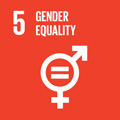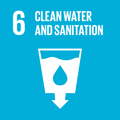- Docente: Pier Luigi Lollini
- Credits: 5
- SSD: MED/04
- Language: Italian
- Moduli: Pier Luigi Lollini (Modulo 1) Patrizia Nanni (Modulo 2)
- Teaching Mode: Traditional lectures (Modulo 1) Traditional lectures (Modulo 2)
- Campus: Bologna
- Corso: Second cycle degree programme (LM) in Medical Biotechnology (cod. 8859)
Learning outcomes
At the end of the course the student will have reviewed the main concepts of immunology, updated to the latest knowledge. The student will have acquired the basic concept of the immune system as a component in the onset of major diseases, will have learned all the basic control mechanisms for maintaining tolerance to self and the possible effects of human aging. The student will be able to understand how new technologies can be critical to the identification of genetic variants for the study of epigenetic effects and expression with the aim of identifying the molecular changes underlying these immune diseases . The student will be aware of possible manipulation of the immune system along with new therapeutic perspectives.
At the end of the course the student:
- Knows the tumor phenotype, the pathogenesis of cancer, including interactions with the microenvironment and the immune system, and molecular tumor progression to metastatic spread.
- Knows the molecular mechanisms of physical, chemical and biological carcinogenesis, epidemiological and molecular epidemiology of cancer, basics of prevention and drug therapies, biological and genetic, with particular reference to the tools offered by biotechnology.
- Identifies the stages of tumor development and tumor types relevant in human cancer and can define molecular targets for innovative targeted therapies
- Can assess the relevance of the various risks of cancer and to predict the applicability of new approaches prevention and treatment in oncology.
Course contents
MOLECULAR IMMUNOPATHOLOGY
(Immunopathology is not part of the syllabus for students of Oncology courses "corsi mutuati")
Infectious immunity
Vaccines
Transplantation immunity
Hypersensitivity: Allergy and Autoimmunity
Immunodeficiencies
MOLECULAR ONCOLOGY
Introduction, definitions and classification
Basic Oncology and Medical
Oncology
The size of the problem
Benign and malignant tumors
Tumors are genic diseases
Oncogenes and tumor suppressor genes,
gatekeeper and caretaker
Mechanisms of cancer gene
activation/inactivation and their consequences
Therapeutic implications of oncogenes and tumor
suppressor genes
Genetic predispositions
The neoplastic phenotype
Growth, Differentiation, Cell
death
Genomic instability
Morphological and metabolic features
Natural history
Monoclonality, Heterogeneity
Preneoplastic lesions
Progression
The causes of cancer
Exogenous and endogenous
carcinogens
Biological and molecular mechanisms of physical,
chemical and biological carcinogenesis
Cancer epidemiology
Primary, secondary and tertiary cancer
prevention. Chemoprevention. Immunoprevention
Tumor-host relationships
Angiogenesis
The metastatic process
Paraneoplastic syndromes
Tumor immunology
Fundamentals of cancer therapy
Basis and molecular/biological
mechanisms of cancer therapy: radiation therapy, drugs, biological
and immunological agents, gene therapy
Readings/Bibliography
- Abbas, Lichtman, Pillai: Immunologia cellulare e molecolare, Elsevier.
- Robbins. Kumar & Klatt. Il manuale di patologia generale e anatomia patologica. Edra Masson.
- Pontieri, Russo, Frati: Patologia Generale, (only chapters on oncology), Piccin.
- Boyle, Levin: World Cancer Report 2008. IARC, Download free PDF file at www.iarc.fr
- Weinberg: The Biology of Cancer, Garland Science.
- Pecorino: Molecular Biology of Cancer, Oxford University Press.
- DeVita, Lawrence, Rosenberg: Cancer, Principles and Practice of Oncology, LWW.
Teaching methods
Lectures.
Assessment methods
The oral exam will cover all the subjects of the course. For students of Oncology courses ("corsi mutuati"), the exam will exclude Immunopathology.
The student has to answer questions to demonstrate his/her knowledge of speciifc subjects, the ability to understand the links between different parts of the course, and the use of appropriate terminology.
Teaching tools
All the slides used for lectures are made available to the students.
Office hours
See the website of Pier Luigi Lollini
See the website of Patrizia Nanni
SDGs



This teaching activity contributes to the achievement of the Sustainable Development Goals of the UN 2030 Agenda.
